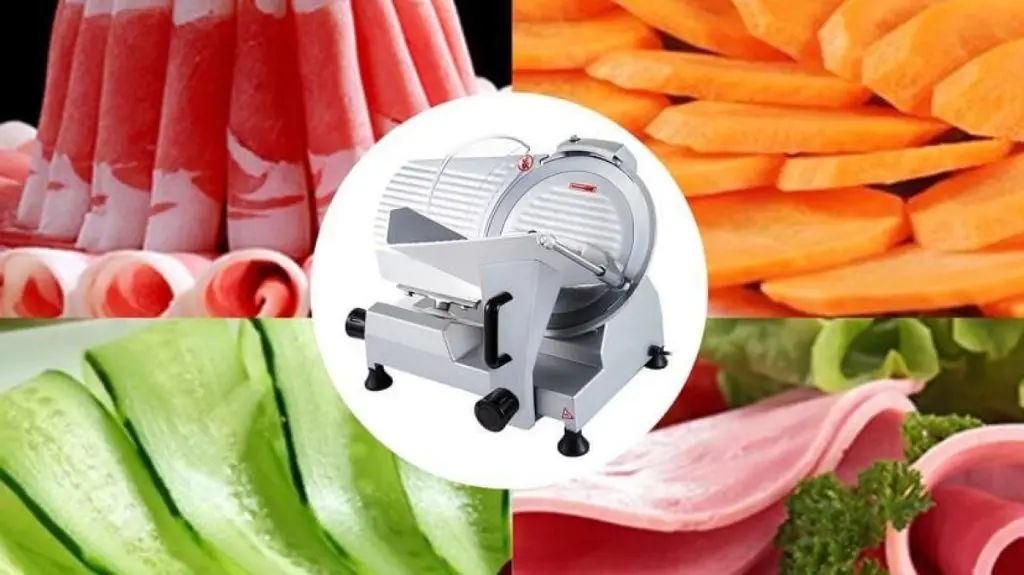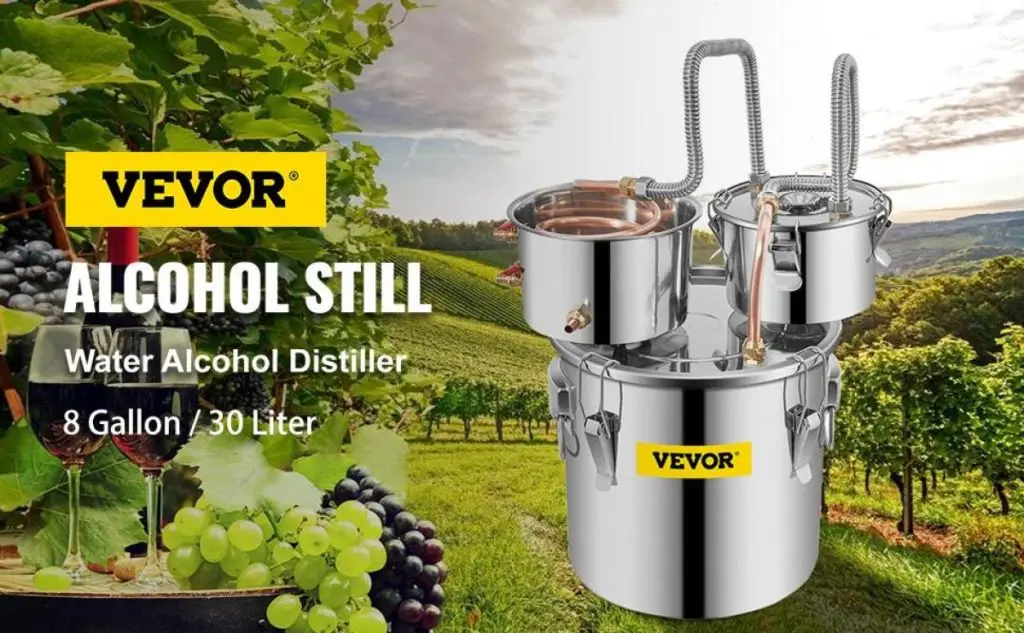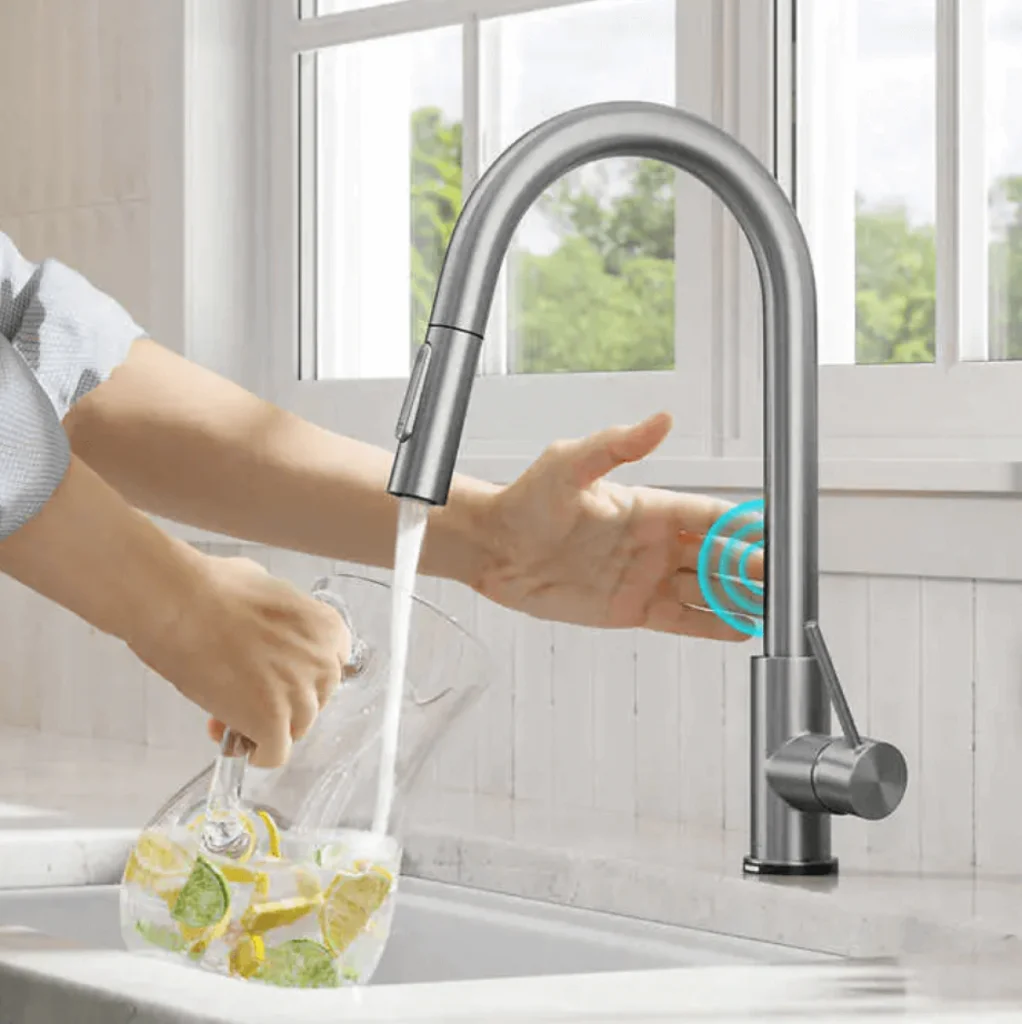Introduction
Are you confused about whether to use a food processor vs mixer in your kitchen? The issue is a common one, be not afraid. This in-depth comparison will detail both the advantages and disadvantages of each appliance for you to then be able to make a decision. Picture this: You are in the kitchen, trying to peak in cooking art, but do not know which tool would serve you better. Using a food processor you imagine easy slicing and chopping, while a mixer assures you of airy dough and creamy mixes. But which is actually more dominant? Let us go into the depth of the subject exploring functionality, versatility, and efficiency. After reading this article, you will proudly hold the perfect tool in your hands with which you can explore any culinary adventure.
Table of contents
Overview of Food Processors
A food processor is a multi-functional kitchen machine that can handle diverse food preparation tasks easily and fast. Its primary function is to make laboring-intensive processes of chopping, slicing, shredding and pureeing much easier.
Components and features
- Motor power: The power of the motor is the heart of the food processor and it explains the performance of the processor. Higher watts, in turn, translate to enhanced processing power, enabling you to attempt hard ingredients with ease.
- Blades and discs: The food processor can be fitted with various blades and discs for dissimilar operations. The components like chopping and mixing blades along with slicing and shredding discs give users a wide area of food preparation.

- Bowl capacity: Bowl capacities differ, for food processors, and they range from small-sized pieces which are ideal for small batches to larger capacities for bulk processing.
- Controls and settings: The majority of food processors feature easy-to-use control panels with many speed settings and the pulse function, which will guide you through a perfect processing option.
Pros:
- Versatility: Coming with diverse attachments, a food processor is able to handle all food preparation tasks, ranging from chopping vegetables to kneading dough.
- Time-saving: By automating manual tasks, a food processor eliminates the prep time and thereby you can concentrate on other aspects of cooking.
- Consistency: Achieve uniform results every time to replicate the same texture and flavor of your dishes.
- Efficiency: Process ingredients fast and simplified, lessening your cooking process.
- Ease of use: A simple operation and easy clean up make food processor a handy kitchen equipment.
- Nutrient retention: Minimal exposure to heat and air during processing allows nutrient preservation of ingredients.
Cons:
- Size and storage: Some food processors are big and will take up a lot of counter or store space.
- Cost: High-class food processors tend to be an investment, but their versatility means their price is worth it.
- Noise: High-powered motors can produce notable noise when they are running.
- Not suitable for all tasks: Although multifunctional, food processors could possibly fail to achieve certain tasks such as kneading thick bread dough or whiskling soft batters.
- Maintenance: Cleaning different components of a food processor may take a lot of time, particularly if it is not done quickly after using it.
Overview of Mixers
A mixer is a kitchen utility that is used for mixing, beating, whipping, or kneading ingredients of different recipes. Its key role is to mix components well so as to achieve intended textures and consistencies.
Components and Features:
- Motor Power: Mixers differ in motor capacities starting at small ones for light tasks to huge ones for professional use. With tough ingredients, higher wattage stands for better performance.
- Attachments (Whisks, Beaters, Dough Hooks): The machines are known to have interchangeable attachments that can perform multiple activities. Their functions are very explicit: whisks for aerating and blending, beaters for general mixing, and dough hooks for kneading dough.
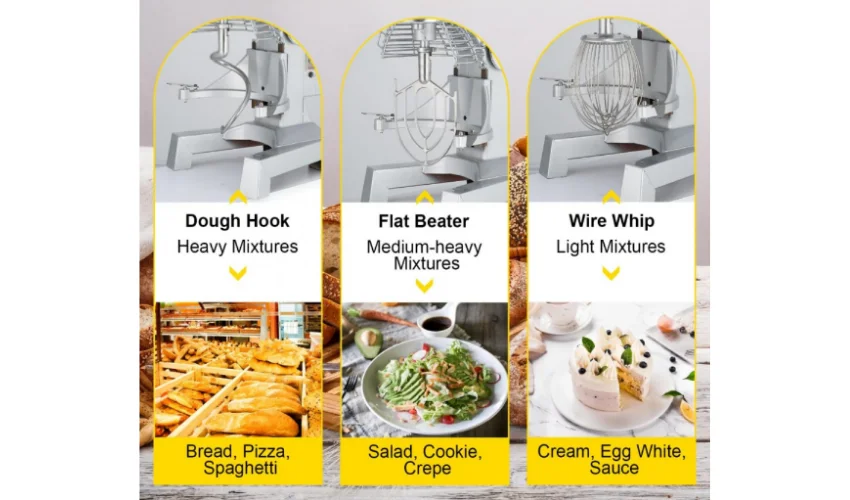
- Bowl Capacity: Bowl volume shows how many ingredients you can process at a time. Go with a size that matches your average amount of product needed.
- Speed Settings: Mixers are equipped with multiple speed settings to make different types of dough. The adjustable speed control is an important feature that helps in creating an appropriate mix.
Pros:
- Versatility: Mixers are multifunctional to perform a variety of jobs from cream whipping to bread dough kneading.
- Efficiency: They speed up the mixing process, therefore, resulting in less manual effort and cooking time.
- Consistency: Mixers provide uniform mixing, which is a must for precision cooking tasks like baking.
- Hands-Free Operation: Once the mixer is set up, it operates hands-free, and you have the opportunity to focus on other kitchen duties.
- Attachments: Attachments that can be exchanged and which widen the possibilities of the mixer give it versatility in preparation and baking.
- Speed Control: The ability to adjust the speed ensures accurate control over mixing and obtaining the desired result for different types of recipes.
Cons:
- Size and Space: Some mixers take up a lot of space on the counter or even require additional storage space.
- Cost: Expensive high-quality mixers with lots of features need a huge sum to be bought.
- Limited Functions: Although mixers are multi-functional, they may not be appropriate for some detailed tasks like slicing or chopping.
- Cleaning: Cleaning mixers, particularly attachments and bowls, could take a long time and it is important to pay careful attention.
- Noise: High-speed blenders can be excessively loud during their operation which can hamper other household activities.
- Power Consumption: High-power mixers generally consume more electricity, potentially leading to higher utility bills.
Food Processor Vs Mixer – Comparison Analysis
Uncover every single difference between the food processor vs mixer down below:
A. Design and Construction
- Food Processor: Generally a food processor would have a wide base, a large bowl, and a lid with many different attachments. These accessories consist of sawing discs, shredding discs, slicing blades, and sometimes even dough blades. The construction is sturdy, mostly made of plastic or metal, which goes a long way in assuring durability and stability during operation.
- Mixer: Mixer machine has different designs but mostly it has a motor base with a mixing bowl and beater or attachments. The construction is sturdy, with the motor very well secured to be able to cope with the rigor of mixing thick batter or kneading dough. The bowl is mostly of stainless steel or glass in order to provide durability and convenience during cleaning.
B. Efficiency and Speed
- Food Processor: Food processors are perfectly suitable for efficient performance, especially in tasks such as chopping, slicing, and grating. They are able to process large volumes of ingredients with great accuracy thereby, substantially cutting down on the prep time. You can make your ingredients as coarse or as fine as you need them using the speed settings on your blender.
- Mixer: Mixers are the most popular tool because of their high speed and efficiency in foaming, smoothing, and mixing tasks. The use of multiple speed settings and strong motors to whisk the ingredients into a very light and fluffy consistency for cakes; meringues; and creams. Mixers give equal results, especially when you are dealing with dense doughs or heavy batters.
C. User-friendliness and Cleaning
- Food Processor: The food processor is not complicated to use as it has intuitive control features and interchangeable attachments for various tasks. The majority of them have a fast and easy-to-mount system that helps you change between functions in seconds only. The fact that most of the parts are dishwasher safe also simplifies the cleaning, as you save time and effort after meal preparation.
- Mixer: Mixers include handles for easy access, in addition to convenient controls for altering speed and attachments. Some parts may call for handwashing, but many mixers come with dishwasher-safe elements, so cleaning is no longer labor-intensive. Convenience of operation and cleaning improves user satisfaction.
D. Cost and Value
- Food Processor: Food processors are a great deal in terms of price given to their numerous multi-purpose functions and time-saving within the confines of your kitchen. The initial investment costs vary with the brand and features of the product in focus but the long-term benefits will compensate for those expenses. Not only does purchasing a high-level food processor save time in the kitchen, but it also widens your cooking horizons.
- Mixer: Mixers would incur relatively high initial costs, especially those made of higher-grade models with many features. Nonetheless, these benefits in terms of efficiency, reliability, and versatility outweigh their cost. If taken care of, mixers that are made to be durable can serve you for years which makes them a great investment for home cooks or professional chefs.
E. Ability to Perform Different Tasks
- Food Processor: With respect to chopping, slicing, and shredding, food processors are just the right tools for cutting the ingredients for salad, dip, or sauce. Moreover, their skills encompass the kneading of doughs and pastry crusts without being as experienced as mixers in attaining the desired texture of baked goods.
- Mixer: Mixers on the other hand are designed to undertake tasks like cream whipping, egg beating and dough mixing. As such, they are very crucial to the bakers. The heavy construction and strong motors of these mixers enable them to deal with all mixing tasks regardless of hardness without compromising uniformity of results for cakes, cookies, and bread amongst other bakery products.
F. Real-World Applications
- Food Processor: Real-world application exemplifies their strength where you have to quickly chop vegetables for stir-fries, grate cheese for toppings, or puree ingredients for soups and sauces. They are also great for making homemade nut butter, breadcrumbs, and salads, making your culinary creations unique.
- Mixer: Real-world applications of mixers stretch out from making fluffy tasty cakes and meringues to kneading dough for breads and pizzas. No matter, if you’re planning to make cookies for a family gathering or try artisanal bread recipes, a reputable mixer, will ease your task and guarantee consistent results.
Choosing the Right Appliance
Know the factors affecting the right choice regarding the food processor vs mixer in the following section:
Cooking Habits:
Spend some time evaluating your own cooking style so that you can choose the correct appliance for you. If you always work with dishes that need to be chopped, sliced or shredded, you should also try using a food processor. If you spend your time baking or making batters or doughs regularly, a mixer would be a much better choice.
Capacity Needs:
Think about the amount of food you process on average. A food processor is generally designed for large capacities which makes it ideal for processing larger amounts of ingredients. Nevertheless, if you often work with smaller amounts, a mixer with a smaller bowl capacity can be a practical solution for you.
Countertop Space:
Assess the available space in your kitchen. In most cases, a food processor has a larger area and therefore will take up more room on the countertop for storage and operation. On the other hand, a mixer, particularly a small stand mixer, is possibly the best option if your kitchen does not have much space.
Noise Level:
Consider the noise level of each appliance as one of the factors. Food processors may become loud when working, particularly when breaking tougher items. Mixers, like stand mixers, are usually a little quieter but still make some noise, especially if they are running at high speed. Think about how much noise you can put up with and whether a quieter working mode is an issue for you.
Best Food Mixer/Processors to Purchase in 2024
The choice of the best quality product matters to harness the optimum results in the long run. There is a wide variety of food mixers or food processors in the market. Get familiar with the top-class products for food processor vs mixer to buy today:
VEVOR 15QT Food Mixer
Upgrade your commercial kitchen using VEVOR Commercial Food Mixer. Designed to meet the highest hygienic standards, it is made of food-grade 304 stainless steel parts, therefore offering premium quality and safety. A large 15Qt stainless steel bowl can easily deal with 3.3 lbs of dough in one batch. Customize your mixing experience with three replaceable attachments: A spiral Dough Hook for heavy dough, a Flat Beater for versatile mixing, and a Wire Whip for light mixers. Adjust between three speeds (110/178/390 RPM) to cater to the diverse mixing requirements. Some notable safety features include the bowl guard and the independent START/STOP buttons. Just right for bakeries, restaurants, and so on.

VEVOR Food Processor
Enjoy the food convenience with the VEVOR food processor. This 14-cup power machine does the mixing, chopping, slicing, pureeing, and even dough kneading for its customers with ease. Powered by 3 stainless steel discs, a meat grinding blade, a dough blade, and a scraper, this processor makes all tasks look like a breeze. This 650W motor has many speed adjustments, including P-pulse, that greatly simplify meal preparations. Its bowl with a capacity of 14 cups as well as its widened feed chute can easily accommodate big amounts of ingredients which is really helpful for large families. It is manufactured with BPA-free food-grade ABS and stainless steel, which is detrimental to your health. It also features an automatic reset thermostat and overload protection, so it can serve for a long time.
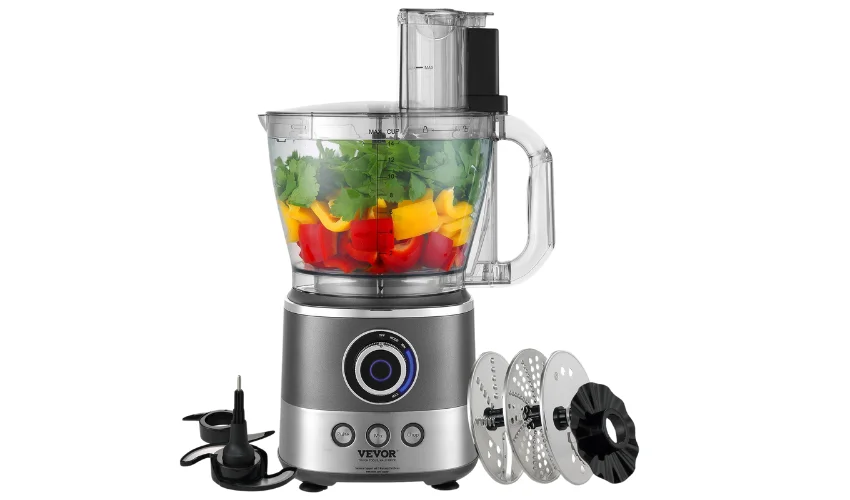
FAQs
Know the frequently asked questions on the topic food processor vs mixer below:
Is the food processor the same as the blender?
A food processor and a blender cater to different needs. Although both devices can mix ingredients, a food processor is perfected for chopping, slicing, and shredding solid foods that are equipped with its various attachments, on the other hand, a blender is typically designed for smoothies and liquids.
Which is better mixer or blender?
It depends on what specific goal you want to reach. A beater mixes dough, batters as well as whips creams, a blender on the other hand is used for blending liquids, smoothies, and grinding ice.
Which is better juicer or mixer?
Furthermore, it depends on what are your needs. If you like juice to have pulp, a mixer with a juicing attachment can perform the task. Nevertheless, an extracting juicer would be better at processing clear juices.
Is a food processor better than a stand mixer for bread?
In kneading the dough for bread, a stand mixer with its strong motor and dough hook attachment usually becomes the preferred choice of the manufacturer. On the other hand, food processors are also very good at making bread dough but not as well as other processors. Uncover insights on top 3 stand mixers for the best choice.
Which mixer is good for home use?
At home, we’d need something versatile like a hand mixer or a compact stand mixer with different speed settings and attachments that can handle different cooking and baking needs without completely consuming the kitchen space.
Conclusion
After going through the subtleties of food processor vs mixer, you now know for sure what each appliance can do. It’s high time you had the proper instrument for work in your kitchen. The cuisine you prefer, whether it’s a finely chopped vegetable or a cake batter with air, will determine how your culinary adventure will turn out. Recall, efficiency, and versatility are important features of your appliance. Through the course of your culinary travels, be sure to check out VEVOR’s selection of mixer products suited to your personal requirements. Own your kitchen and embark on a culinary adventure. Pay close attention, and be creative with a good food processor or mixer.


